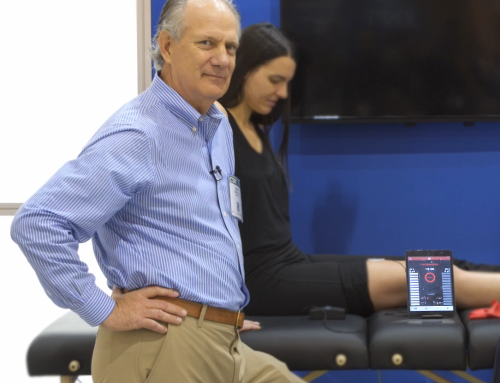Sometimes in rehabilitation, we get so focused on the optimal performance of an exercise, we forget the amount of learning that occurs during the process. The ability to learn proper muscle activation, timing, and motor control is a practice that takes time and effort. sEMG biofeedback is a perfect tool to help reinforce proper movement patterns during exercise.
When first learning to perform an exercise correctly, it can be nearly impossible for patients to distinguish between correct and incorrect movements. Sometimes you simply can’t ‘feel’ the difference. Without proper feedback, the process of learning to repeatedly perform an exercise correctly is cumbersome.
With mTrigger biofeedback, the correct form gets reinforced immediately. This leads to a better understanding of the relationship among target muscle activation, biomechanics and form, and the desired movement. Over time, the need for constant feedback lessens, after which mTrigger can be used for intermittent feedback and affirmation of correct exercise performance.
Clinical Applications
Let’s walk through a few common examples of exercises that can be challenging to perform correctly but can be greatly improved with the support of sEMG biofeedback.
In this example, it is common to see a patient not achieving the desired range of motion (ROM) due to a lack of scapular muscle activation. Having visual biofeedback allows for a sequence of learning to occur that leads to both improved muscle activation and improved ROM.
A classic symptom of low back pain is lack of glute activation and poor muscle timing. Frequently, patients over-activate their low back extensor muscles to compensate. Working out of this undesirable movement pattern can be very challenging and frustrating. Understanding and learning occur slowly, but it is all part of the process.
Finally, a simple glute bridge can often exhibit more compensation patterns than we care to admit as rehab providers. For this exercise in particular, using biofeedback to help patients with the process of learning how to activate their glute muscles can be instrumental.
Summary
The use of sEMG biofeedback during the learning phase of an exercise can be instrumental in someone’s success when learning and performing an exercise.
Learn more about motor reinforcement
|
Join our email list
|









Leave A Comment